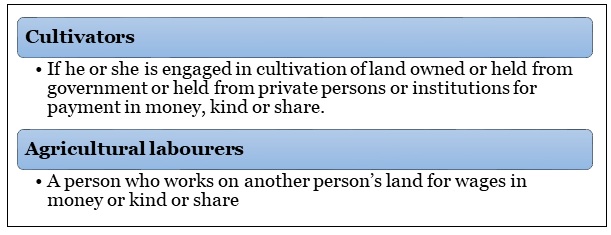900 319 0030
enquiry@shankarias.in
Recent rounds of farmer protests demands for a legal guarantee of Minimum Support Price (MSP).
Around 60% of the Indian population works in agriculture, contributing about 17% of India's GDP
|
Census |
% of workforce |
Contribution to the economy |
|
1951 |
69.7 % |
54% |
|
2011 |
54.6% |
18% |

As per a report around 70% of all agricultural households have a land holding size of less than 1 hectare and around 88% have a land holding size of less than 2 hectares.
Reference